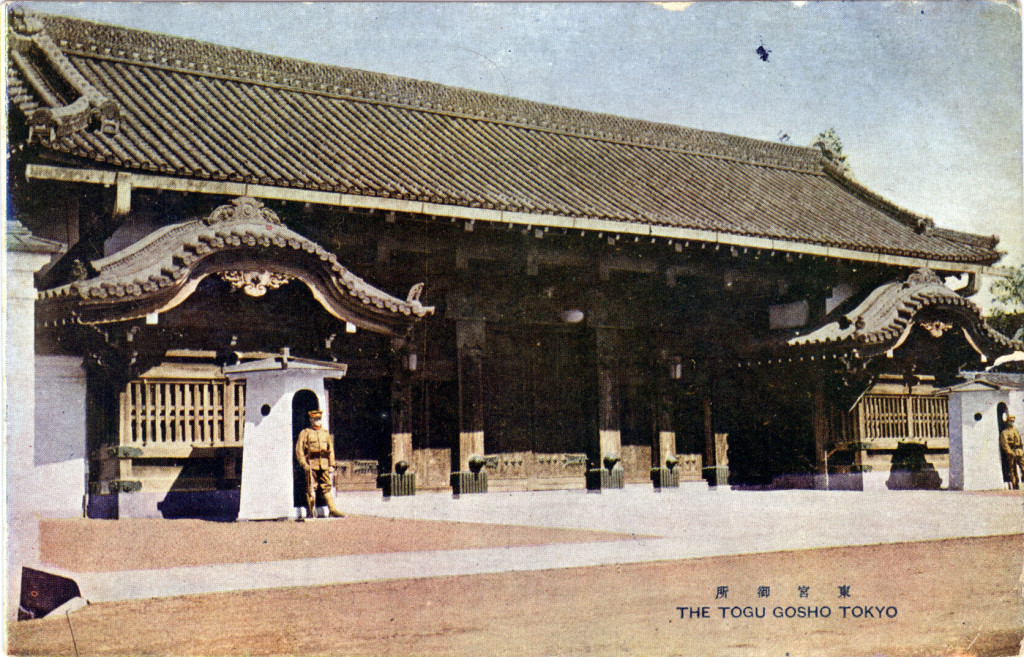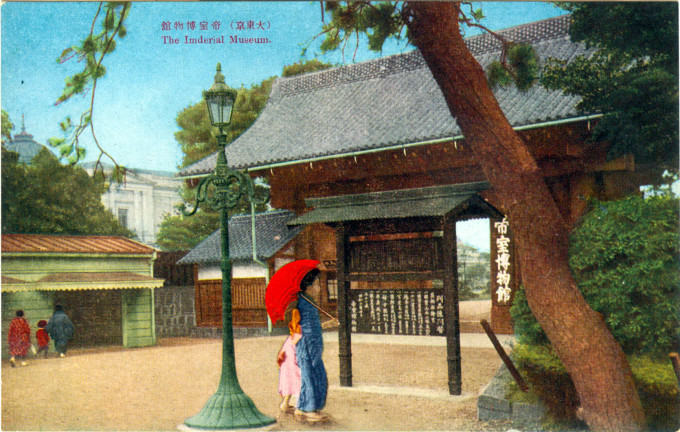
“The Togu Gosho”, Tokyo, c. 1920. “Togu Gosho” [lit. “East Palace”] traditionally does not refer to a single location, but to any residence of the Imperial Crown prince. The former Takanawa Palace (above) was the residence of Crown Prince Hirohito from 1913, when he became Crown Prince, until moving to the Akasaka Detached Palace following his marriage to Princess Nagako in 1923.
See also:
Akasaka Detached Palace, c. 1920-1950.
Ueno Park Museums, c. 1910
“It is announced that Takanawa Palace will be hereafter called the Togu Gosho or the Crown Prince’s Palace. The [existing] Crown Prince’s Palace in Akasaka Palace will be known as a part of the same Palace [on the grounds of the Akasaka Detached Palace].”
– Japan Times & Mail, 1913
“Three gateway structures from Edo survive today in historically and architecturally viable condition. Two of these, the Ikedamon and the Akamon, are conspicuous landmarks in modern Tokyo.
“The Ikedamon, popularly known as the Kuromon or ‘Black Gateway’ because of its sombre aspect, stands in the outer wall of the National Museum complex at Ueno. It was first built as the principal entrance to the mansion of the daimyo of Tottori to the immediate southeast of Edo Castle. It was moved to the Togu Gosho at Shiba Takanawa in 1891, and finally to the present site [as the entrance to Hakubutsukan at Ueno Park] in 1952.”
– Architecture and Authority in Japan, by William H. Coaldrake, 1996


